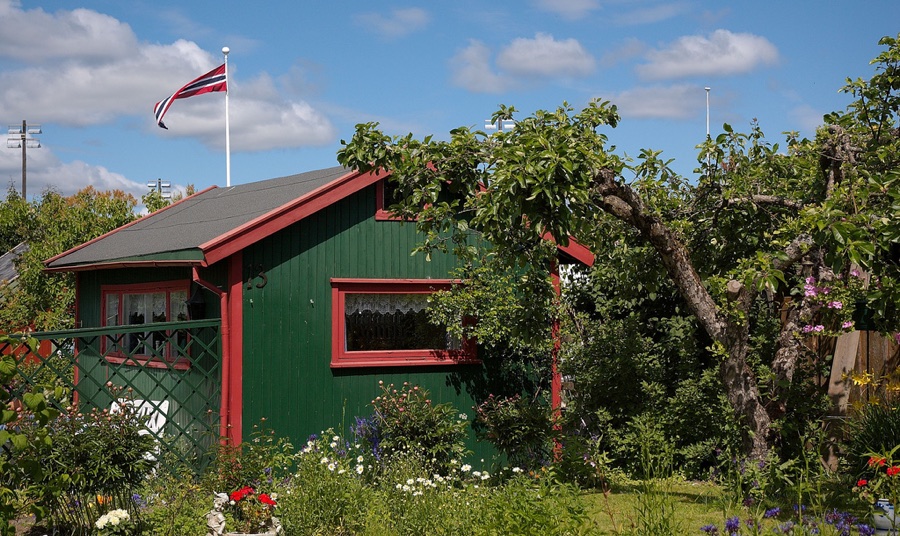Found in some larger cities, ‘kolonihager’ are communal gardens that offer city dwellers communal spaces to cultivate plants and foster community in urban environments.
It is a bright summer’s day in June and I am standing at the bus stop opposite my house heading into downtown Oslo when I see a hen walking down the street.

The hen starts jumping, repeatedly crashing into a fence as it tries to get back into the peaceful garden it came from.
A man, also waiting for the bus, tries to grab the hen that has escaped its haven.
We coordinate our efforts.
I spot someone behind the fence in their garden and shout out to them asking if they are missing a hen.
She says yes and I tell her the escapee is here on the street.
The story ends well as the hen is coaxed round the corner and back into its pen in to one of the immaculate gardens in the Solvang kolonihager.
True story!
The Norwegian Version of the British Allotment
Coming from the UK, I am pretty familiar with the sight of allotments. Neat little quadrants of vegetable patches and flower beds with sheds in all different shapes and sizes.
It was a common sight for me during my train ride into London Bridge every day. It always made me conjure up images of retirees chatting away as they plant and weed, sitting on deckchairs soaking up the odd bit of sunshine when it comes their way.
A green oasis in rumbling urban areas.
Kolonihager are all of that and then some. Before I made the allotment connection I often wondered what the little village of houses with beautifully manicured lawns and blooming flowerbeds across the road from my house was.
A Long History in Norway
Kolonihager have been around in Norway for over 100 years. The first kolonihage was set up in Kristiania (former Oslo) in 1907. When the population of cities began to boom as industrialisation hit the scene.
Just as with the allotment movement across Europe these green areas were set up for those people and families living in apartment blocks and overpopulated urban areas to have access to their own gardens.
Initially in Norway these areas were set up for those wishing to use it as farming land to produce their own food supply. Later it was permitted to set up utilities (running water, electricity) and eventually leasers got permission to build their own hytte (cabins) too.
Each kolonihage is its own community with its own social activities, governing structure and rules and regulations you follow as a member of this community.
On the Norsk kolonihageforbund (NKHF i.e. Norwegian Allotment Association) website kolonihager are described as being for those that will share in a joint enterprise and have time to help beyond their own doorstep (translation).
They are basically the ideal communities. Everyone works to keep things looking perfect, everyone keeps up to date with information related to the kolonihage, and everyone joins in on the activities.
Why? Simply, it is the responsibility that comes with being a part of this unique community.
A Waiting List
Getting a piece of this idyllic action does not come easy. They are not set up to be permanent residences so they cannot be used as your official address.
Those that lease (long term leases as the kommuner are the actual owners of the land) cabins have permanent residences in the kommune in which the kolonihage is located.
The cabins are capped at prices that undercut the housing market significantly. In 2006 the prices were capped at NOK 250,000.
On the downside however, there are long waiting lists for buying one of these properties, with typically over 10-20 years waiting period.
All kolonihager in Norway are governed by the NKHF that are members of the European Allotment Association. They govern the overall rules and regulations of all 14 kolonihager and 2 parsellhager (parcel gardens) in Norway.
Kolonihager can be found around Oslo and in other areas such as Stavanger, Drammen and Trondheim. They are open to the public and most of them have parks and playgrounds, some even have their own little cafes and kiosks.
Why not find out where your local kolonihage is and pop in for a stroll?

